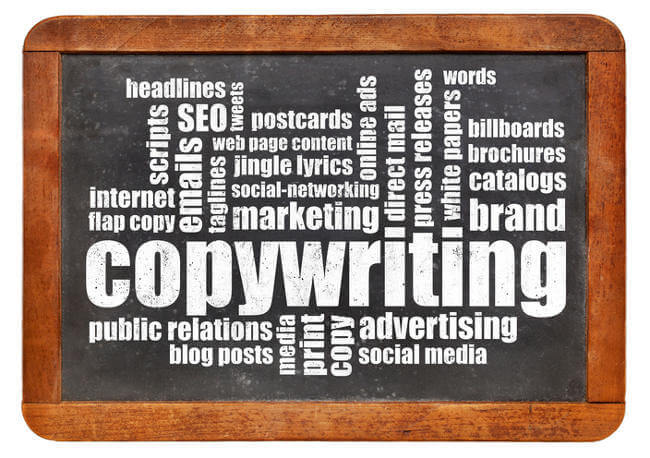Whether it’s for sales or marketing purposes, business copywriting should appeal to your target audience. Sounds tough, but there’s good news. Understanding how to write copy can be done with a bit of marketing knowledge.
Content vs. Copy
Before delving into how to write copy, let’s clear up a common misconception:
- Copy is written words, typically used for advertising and marketing
- Content is the information and experiences that a brand conveys to your audience. This could include written words, graphics, photos or videos.
So, copy is content. And content is not always composed solely of copy. However, copy is a key component of virtually every content marketing campaign, even those that are highly visual.

How to Write Copy: 5 Tips for Success
1. Speak the Language
Learning how to write copy begins with your target audience. Who are you writing for? Highly-trained professionals? A wide range of people that covers several different demographics?
Your target audience’s characteristics should inform your word choice. It’s up to you to judge whether your readers will understand industry jargon, or if you should use more common words.
2. Ask, “So What?”
The “so what?” test is a great tool when you’re learning how to write copy. It’s exactly what it sounds like: you write a draft, read it and ask, “So what?”
If the copy doesn’t tell readers how they benefit, that piece of content won’t be persuasive. If your reader doesn’t find value within your content, there’s less of a chance they’ll interact with your company in the future.

3. Tell a Story
Storytelling is a content marketing method that involves turning your brand into something more than a business that sells products or services. It makes your brand an entity that consumers can relate to, resulting in a more favorable image.
Storytelling within your written copy may involve the following:
- Empathy. Relate to your reader’s problems in a way that other brands can’t.
- Anecdotes. You don’t need to invent a fictional story. Tell a real-life story about how your company helped a client succeed.
- Immersion. Make the reader the protagonist. Ask your reader to imagine they’re in a specific situation, and provide examples to demonstrate ways your business can help them.
Relating to your readers through storytelling allows you to build trust with them.
4. Write for the Channel
Your channel is the medium through which your audience will read your copy. Some examples include:
- Your website
- Social media
- Display advertisements
- Email marketing
Let’s differentiate between writing for a webpage vs. a social media advertisement. A webpage is obviously more in-depth, giving you the room to be a bit more long-winded and provide explanations. On social media, however, brevity is the key.

5. Tailor your Call-to-Action
We recommend including a call-to-action (CTA) in almost all marketing materials. You could ask your reader to make a purchase, request a consultation or download a valuable content offer.
Regardless of what your CTA is for, its written elements should include the following:
- Action-oriented. Invite your reader to take the next step by using an action-oriented phrase.
- Experts recommend keeping your CTAs brief so you don’t lose your reader’s focus.
- Demonstrate value. Words like “free,” “discount” and “exclusive” convey your offer’s value and promote action.
Learning how to write copy doesn’t require you to be a literary genius. With some practice and the right advice, you can start writing copy that truly resonate with your target audience.


